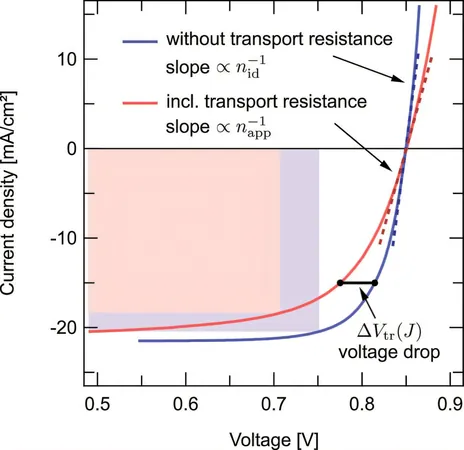
Breakthrough in Organic Solar Cells: Overcoming Efficiency Challenges with New Insights!
2025-03-31
Author: Jia
Introduction
Researchers from the Chemnitz University of Technology, spearheaded by Prof. Dr. Carsten Deibel at the Chair of Optics and Photonics of Condensed Matter, have made significant strides in the field of organic solar cells. These innovative solar cells, crafted from novel organic semiconductors, can be produced using established printing techniques, offering an affordable and scalable alternative to traditional solar technology.
Challenges Facing Organic Solar Cells
However, there's a catch! While organic solar cells are easier and cheaper to manufacture than conventional crystalline silicon modules, they face a daunting challenge: slow current flow. According to Deibel, 'The disordered structure of the organic, light-absorbing layers, produced in an ink-like form, leads to sluggish current movement.'
Impact of Transport Resistance
This sluggishness brings about transport resistance, a detrimental factor that impacts the fill factor of these cells and, ultimately, their power output. In their quest to enhance the efficiency of organic solar cells, Deibel and his research assistant, Maria Saladina, have tirelessly examined various types of these solar cells to shed light on the negative ramifications of transport resistance.
Research Insights
By analyzing the current-voltage characteristics while under illumination, the team gathered crucial insights into the power efficiency of their solar cells. These characteristics reflect the delicate dance between charge generation from light, the recombination of electrons and holes, and the charge transport processes. They then compared these findings with the innovative suns-Voc method, which curiously bypasses the limitations imposed by charge transport losses.
Understanding Transport Resistance
'Transport resistance arises from the sluggish movement of charge carriers within the disordered framework of these organic ink-processed solar cells,' Saladina clarifies. 'As a result, the charge carriers collide with one another, causing a significant drop in fill factor and efficiency.'
Publishing Breakthrough Results
Their groundbreaking results have been published in the journal *Reports on Progress in Physics*, shaking up previous assumptions about optimizing organic solar cells. The researchers assert that there are no insurmountable hurdles to producing highly efficient printed organic solar cells despite the challenges revealed by their findings.
Ongoing Research and Future Directions
In a detailed perspective piece featured in *Advanced Energy Materials*, Deibel, Saladina, and their collaborators from various German universities explored the fundamental causes of transport resistance and its implications for solar technology. 'In recent years, improvements in charge transport were made, yet we lacked clarity on how fill factor losses related to transport resistance,' Deibel noted.
Conclusion
Saladina emphasized the ongoing journey: 'Beyond recombination, transport resistance is also dictated by the shape of the density of states within organic solar cells, demonstrating our progressive understanding of the physics underlying these devices.' These findings are part of a larger initiative under the DFG Research Unit POPULAR, aimed at unraveling the complexities of printed organic solar technology. As researchers continue to unveil the secrets of these solar cells, the future appears bright for advancements in renewable energy—potentially revolutionizing the landscape of solar power as we know it!


 Brasil (PT)
Brasil (PT)
 Canada (EN)
Canada (EN)
 Chile (ES)
Chile (ES)
 Česko (CS)
Česko (CS)
 대한민국 (KO)
대한민국 (KO)
 España (ES)
España (ES)
 France (FR)
France (FR)
 Hong Kong (EN)
Hong Kong (EN)
 Italia (IT)
Italia (IT)
 日本 (JA)
日本 (JA)
 Magyarország (HU)
Magyarország (HU)
 Norge (NO)
Norge (NO)
 Polska (PL)
Polska (PL)
 Schweiz (DE)
Schweiz (DE)
 Singapore (EN)
Singapore (EN)
 Sverige (SV)
Sverige (SV)
 Suomi (FI)
Suomi (FI)
 Türkiye (TR)
Türkiye (TR)
 الإمارات العربية المتحدة (AR)
الإمارات العربية المتحدة (AR)